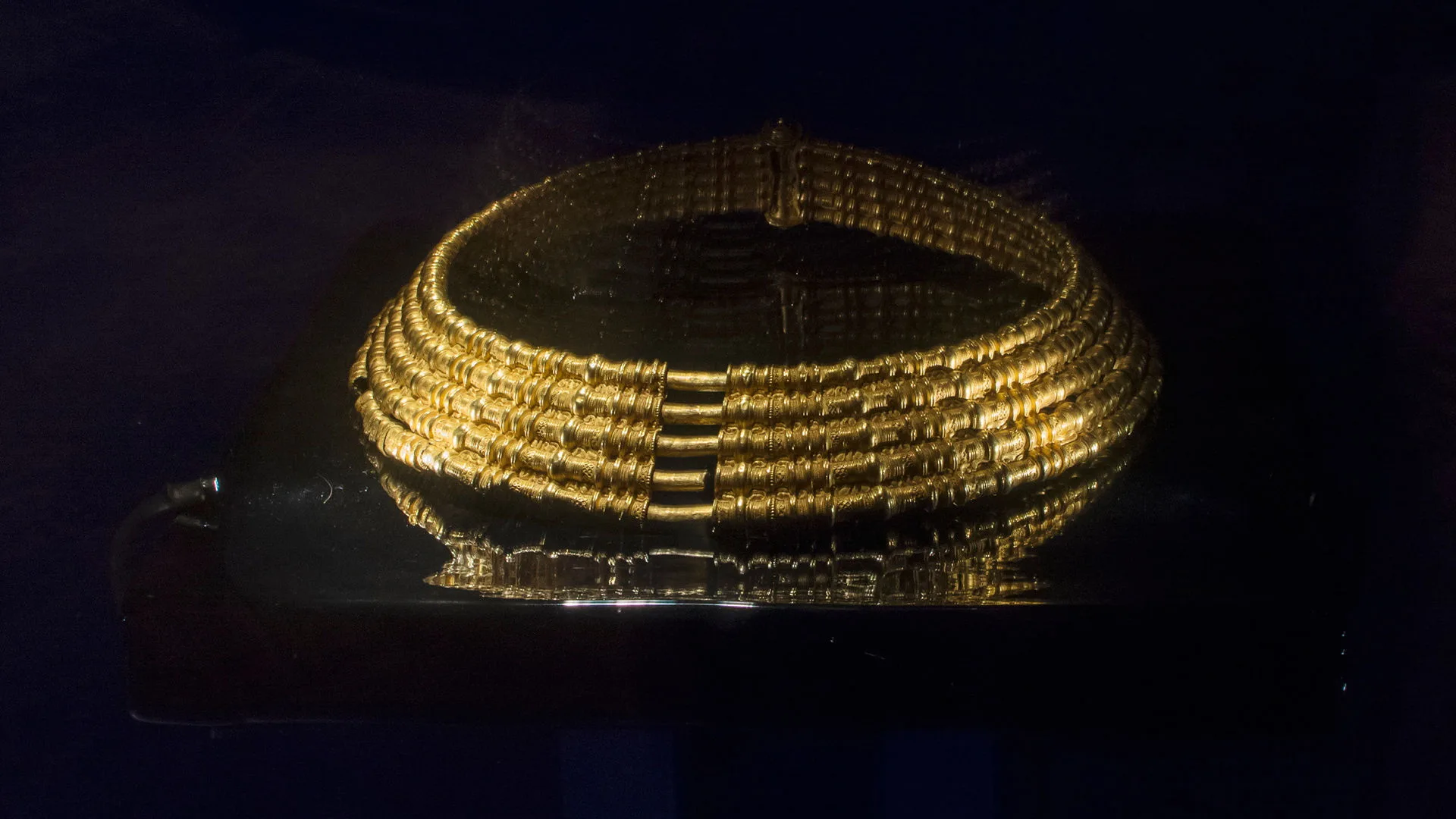Late Iron Age
The period 500 BC–AD 400 is called the Early Iron Age and after that, the Late Iron Age begins. This is when runic writing was created and Scandinavians served as soldiers in the Roman army. The first town-like settlements appeared, and Christianity began to spread in Scandinavia.
Late Iron Age time periods:
The Migration Period (AD 400–550)
The Migration Period in Sweden refers to the years AD 400–550. Its name comes from the great migrations that shaped Europe at this time. Many groups of people were on the move, connected with each other and with Rome through trade, diplomacy, and — not least — war and raids.
AD 400 is usually seen as the start of the period. That was when the Asian nomadic people, the Huns, crossed the Dnipro River in what is now Ukraine and Russia and began moving into Europe. This time has also been called “the Golden Age of the North” because of all the gold objects found in Scandinavia from this period.

Gold neck ring
Found in Färjestaden, Öland, Sweden.
On view at Historiska museet in the exhibition Guldrummet
The Vendel Age (AD 550–750)
The Vendel Period in Sweden refers to the years AD 550–750. It is named after the parish of Vendel in Uppland, where several magnificent graves from the late 500s onwards have been found. Some of the dead were buried in boats with food and drink vessels, board games, valuable weapons and armour, as well as horses and dogs. Similar boat burial sites have been found in several places, including Valsgärde just outside Old Uppsala and Tuna in Badelunda outside Västerås.

Vendel Age helmets
Found in Vendel, Uppland province, Sweden.
On view at Historiska museet in the exhibition Forntider 1
The Viking Age (AD 750–1100)
In AD 793, a Scandinavian fleet attacked and looted the monastery at Lindisfarne on England’s east coast. This raid was followed by many similar attacks across Europe, along with settlements and peaceful trade journeys — all together often called Viking expeditions. Traditionally, this event marks the start of the Viking Age within the Scandinavian Iron Age.
Archaeologists, however, prefer to date the Viking Age from AD 750 to 1100, based on the objects found. Most people in Scandinavia during the Viking Age were not Vikings — neither raiders nor traders — but farmers or unfree people working on farms.








